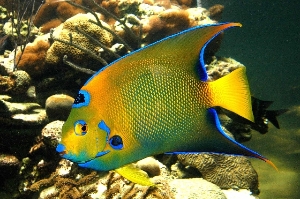-
87 people are interested
Animal Husbandry Volunteer
ORGANIZATION: Smithsonian at the St. Lucie County Aquarium
Please visit the new page to apply.
-
87 people are interested

Behind-the-scenes husbandry volunteers assist with maintenance of six 500 to 2,500 gallon saltwater Model Ecosystems and other small aquaria. Duties include feedings, monitoring water chemistry, specimen collection using seine nets, performing routine water exchanges and monitoring aquaria systems. Husbandry volunteers may also interact with the public and answer questions regarding specimens and aquaria.
Please note that all volunteers are required to undergo fingerprinting and a background check. Minimum age is 17 years old.
6 More opportunities with Smithsonian at the St. Lucie County Aquarium
Opportunities
About Smithsonian at the St. Lucie County Aquarium
Location:
420 Seaway Dr., Fort Pierce, FL 34949, US
Mission Statement
The Smithsonian at the St. Lucie County Aquarium is dedicated to educating the general public and school children about the critical need to preserve Florida's marine environments.
Description
The Smithsonian Marine Ecosystems Exhibit is located in the St. Lucie County Aquarium at 420 Seaway Drive on South Hutchinson Island in Fort Pierce. The Smithsonian Marine Station has teamed with St. Lucie County and other community partners to create this unique educational facility. The Ecosystems Exhibit is an outreach effort of the Smithsonian Marine Station, a branch of the Smithsonian Institution's National Museum of Natural History. A fixture in the Fort Pierce community for over 30 years, the Marine Station is dedicated to understanding the character and diversity of the marine and estuarine habitats of Florida.
At the Aquarium, visitors can explore six different Florida marine and estuarine habitats and learn about the complexity and importance of marine ecosystems. The largest display is a spectacular living model of a Caribbean coral reef ecosystem. Other displays include seagrass, mangrove, lagoon hardbottom and nearshore reef habitats, as well as a deepwater Oculina coral reef. There are several smaller aquarium displays and a touch tank where you can meet some of our local sea creatures.
CAUSE AREAS
WHEN
WHERE
420 Seaway Dr.Fort Pierce, FL 34949
DATE POSTED
July 17, 2024
SKILLS
GOOD FOR
N/A
REQUIREMENTS
- Must be at least 17
- 3 hours per week for 2 months
